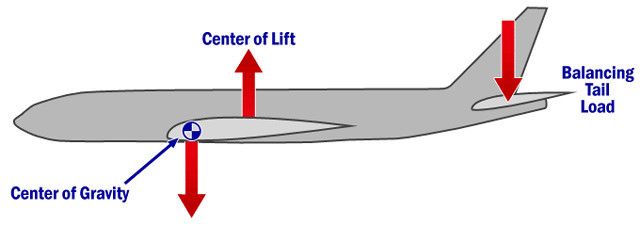I didnt know that one can determine if a plane has RSS simply by looking at the performance of the jet in airshows. However,in real academic terms you need to furnish literature or prove it using equations/engineering/logic etc
Yes, you can. Or at least able to guess with high confidence.
First...You need to tone down the technical words and phrases. What you posted, I can follow, but this is essentially a forum for the interested laymen who want to know the general principles involved, not the detailed math. You posted/spoke as someone who have never spent time in front of students/trainees new the subject.
Now...For the interested laymen, two significant items relating to the question of whether one can tell if an aircraft employs relaxed stability or not:
Center of Lift (CL) and
Center of Gravity (CG).
How they are relative to each other in the longitudinal perspective on the aircraft dictate how the aircraft performs.
To keep things simple, the CL is the point where all aerodynamic effects are realized. We will leave out variables like stall conditions or supersonic flight for now. The CG is the final center of mass of the aircraft. We will leave out variables like persistent cargo such as mail which stays with the aircraft throughout flight, or fuel which is a consumable mass throughout flight.
Again: How the CG and CL are relative to each other in the longitudinal perspective on the aircraft dictate how the aircraft performs.
To continue keeping the language simple...
The CLift raises the aircraft while the CGrav tends to pull it down. Make sense. The closer they are to each other -- on the longitudinal perspective -- the more stable the aircraft. This is what airliners want. We do not want to shake the passengers in flight.
If the CLift is behind the CGrav, the aircraft have a tendency to rotate downwards. This is desirable and again, this what airliners want -- the airliner to try to remain in straight level flight as much as possible. The degree of how far back the CLift from the CGrav is for a much more detailed discussion that is beyond the scope of this thread.
If the CGrav is behind the CLift, flight begins to get dangerous for the human pilot. Most people do not know this, but at least US pilots know that the Wright Flyer was a
PITCH ONLY unstable design. It was only the Flyer's low speed that allowed the Wright Brothers to have effective human control of the Flyer. Because the CGrav tends to pull the aircraft down, and if the CGrav is behind the CLift, this configuration will have the aircraft tends to nose up, and this is why flight begins to get dangerous for the human pilot.
So how can we tell if an aircraft have relaxed stability, at least in the pitch axis, from watching it fly ? By noting the
CONTROL surfaces when the aircraft pitches nose up to climb.
On an aircraft, everything provides lift, but some provides more than others. So in keeping with simple language, we will call the main wings 'lift surfaces' and others as 'control surfaces'. Make sense because the main wings provides the majority of the lifting forces. Smaller surfaces such as the canards, horizontal tail stabilators, and the vertical stabilators are called 'control surfaces' because their main task is to redirect the nose's attitude.
On a pitch stable aircraft, its CLift is behind its CGrav, so when it pitches up to climb, its horizontal tail stabs usually remains deflected, meaning away from parallel with the airframe, to keep the aircraft nose up.
On a pitch unstable aircraft, its CGrav is behind its CLift, so when it pitches up to climb, its horizontal tail stabs deflects to provide an initial nose up change, then return to parallel with the airframe, but the aircraft remains nose up to climb.
There is no need to get detailed with trims and damper operations in this maneuver. Trims and damper operations exists in every maneuver anyway.
Observance of the control surfaces in flight to guess if an aircraft have at least pitch relaxed stability is difficult, but it can be done. That is why there are so many cameras of many types at airshows. High frame rates will help display surface deflections at time intervals of milliseconds. If the video shows the jet remains nose up but the horizontal stabs is parallel to the body, taking trim deflections into consideration, odds are very good that the jet have at least pitch relaxed stability. The jet is simply moving too fast and maneuvers too quick in execution for the human eye to discern.
Mr. Mishra doubts that the JF-17 have pitch relaxed stability since no one have provided documentation for that claim. I will leave it up to the Pakistani members here to take on that challenge. In my case, from my yrs on the F-16, it is difficult to see why would the JF-17's designers moved away from the tried-and-trued computer assisted pneudraulics systems and use the more complex and costly FBW method if the JF-17 does not have pitch relaxed stability.
That said...It does not mean we cannot use the FBW method to control flight. In theory, we can have the WW II era B-17 bomber fully FBW and in practice, it would be easy to do so. All we need is an eccentric billionaire.









